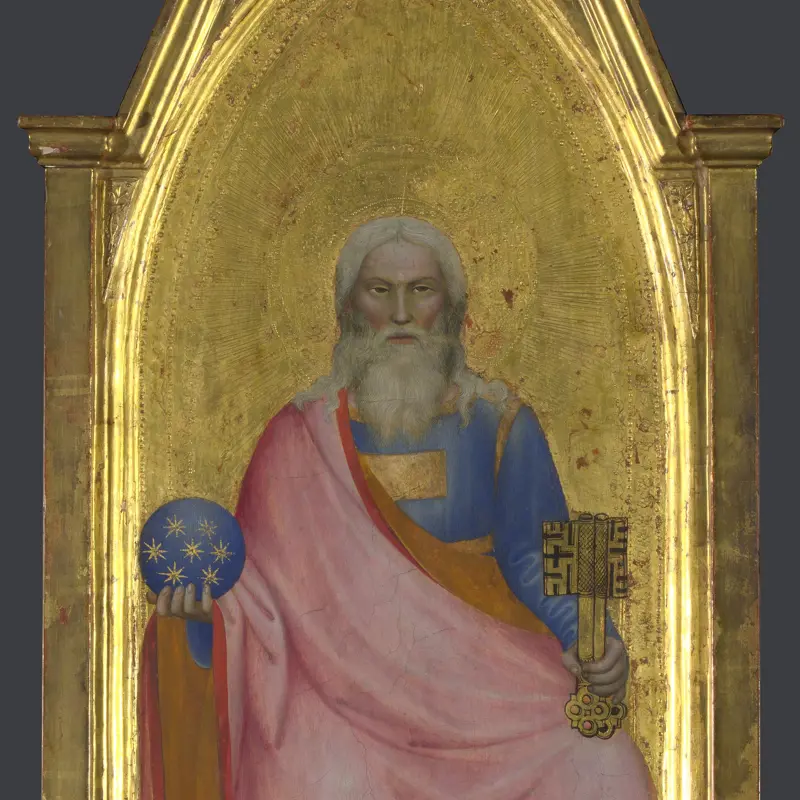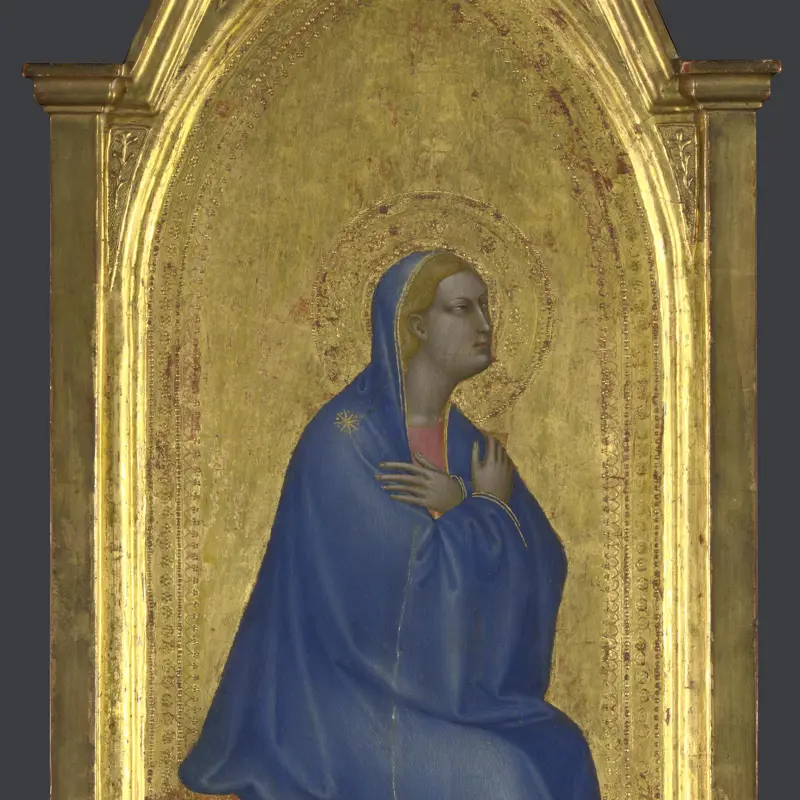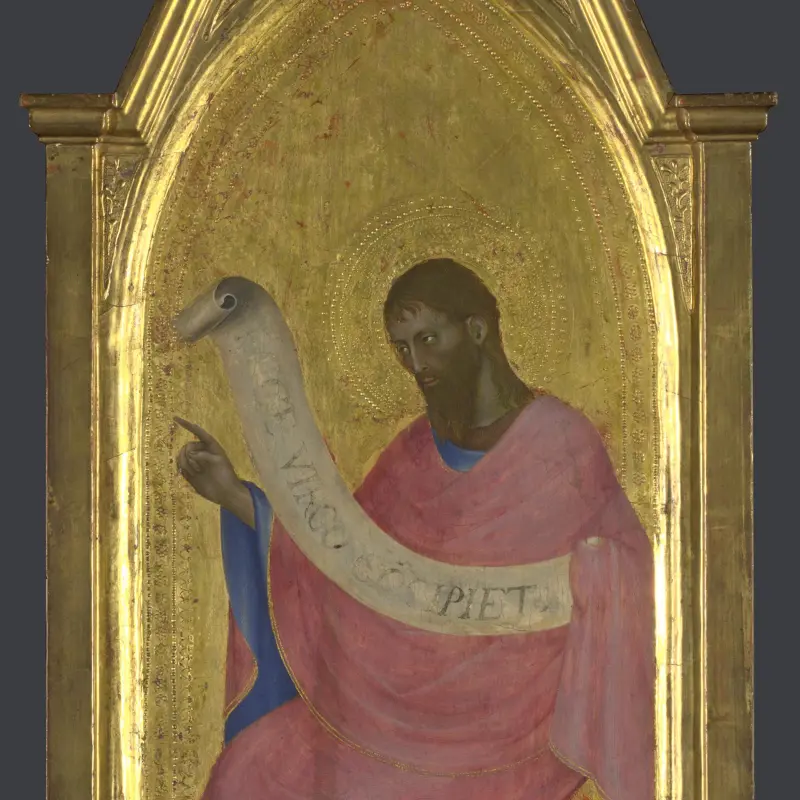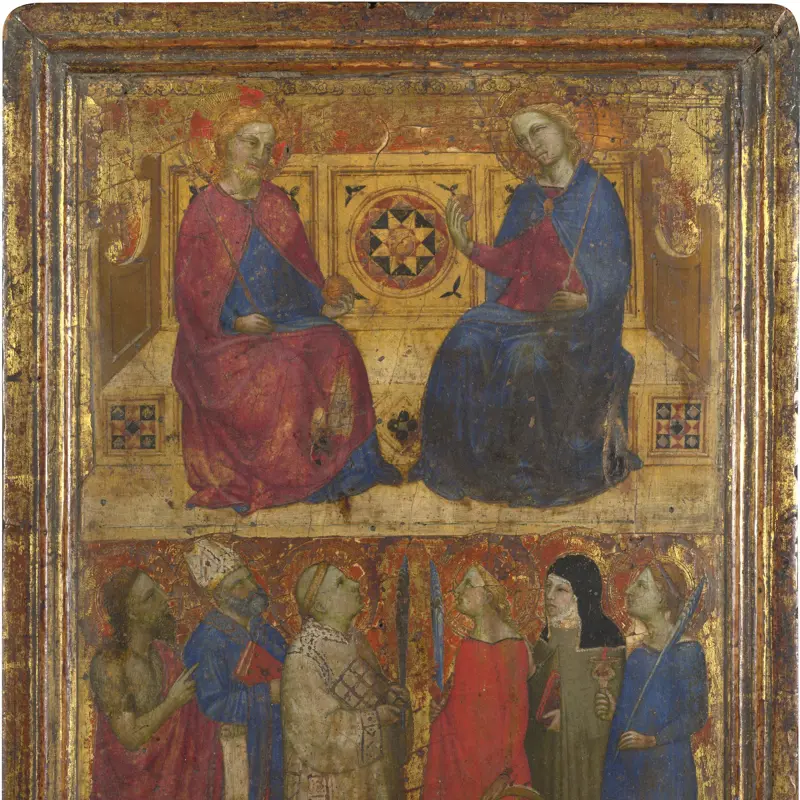Giovanni da Milano, 'The Virgin: Left Pinnacle Panel', about 1365
About the work
Overview
This panel once formed part of the uppermost tier of a large altarpiece. It shows the Virgin Mary with her arms crossed in front of her, a gesture of humility. It was placed to the left of a central image of the Apocalyptic Christ, and opposite one of John the Baptist (both of these panels are also in the National Gallery’s collection).
The theme of the whole altarpiece was divine judgement at the apocalypse, as described in the Book of Revelation, the biblical text that describes the end of the world. John the Baptist and Mary might be paired here because they are both traditionally thought to intervene on behalf of humanity at the Last Judgement, the moment when Christ would judge mankind.
Key facts
Details
- Full title
- The Virgin: Left Pinnacle Panel
- Artist
- Giovanni da Milano
- Artist dates
- Documented 1346 - 1369
- Part of the series
- Pinnacle Panels
- Date made
- About 1365
- Medium and support
- Egg tempera on wood (probably poplar)
- Dimensions
- 89.3 × 37.2 cm
- Acquisition credit
- Bought, 1857
- Inventory number
- NG579.7
- Location
- Room 57
- Collection
- Main Collection
- Frame
- 14th-century Italian Frame with Later Interventions (original frame)
Provenance
Additional information
Text extracted from the ‘Provenance’ section of the catalogue entry in Dillian Gordon, ‘National Gallery Catalogues: The Italian Paintings before 1400’, London 2011; for further information, see the full catalogue entry.
Exhibition history
-
2014Making ColourThe National Gallery (London)18 June 2014 - 7 September 2014
Bibliography
-
1951Davies, Martin, National Gallery Catalogues: The Earlier Italian Schools, London 1951
-
1986Davies, Martin, National Gallery Catalogues: The Earlier Italian Schools, revised edn, London 1986
-
1988Gordon, Dillian, National Gallery Catalogues: The Early Italian Schools before 1400, revised edn, London 1988
-
2001
C. Baker and T. Henry, The National Gallery: Complete Illustrated Catalogue, London 2001
-
2011Gordon, Dillian, National Gallery Catalogues: The Italian Paintings before 1400, London 2011
Frame
This is one of three fourteenth-century Italian pinnacle panels with engaged frames that were part of the uppermost tier of an altarpiece (original location unknown). The outer frame mouldings are not original but the spandrels are decorated with original pastiglia and punch-tooling.
Extensive restoration was undertaken in the nineteenth century, probably in Florence when the panel was in the Lombardi-Baldi Collection. This included the additions to the sides and base, as well as to the outer pinnacle mouldings, along with regilding.
About this record
If you know more about this work or have spotted an error, please contact us. Please note that exhibition histories are listed from 2009 onwards. Bibliographies may not be complete; more comprehensive information is available in the National Gallery Library.
Images
About the series: Pinnacle Panels

Overview
The three panels belonged to an altarpiece that was possibly made for the church of San Salvatore al Vescovo, the Bishop of Florence’s church, located within the Palazzo Arcivescovile. They are pinnacle panels – those appearing at the top, crowning the altarpiece. At some point before they entered the National Gallery, the panels were framed as part of the Baptism Altarpiece by Niccolò di Pietro Gerini. Originally, however, they belonged to a different altarpiece altogether. They have now been removed and are displayed separately.
The central pinnacle shows the ‘Apocalyptic Christ’, the judge of humanity at the end of the world, according to the Book of Revelation (Revelation 1: 13–18). This would have been flanked by panels that show the Virgin Mary and Saint John the Baptist, who turn inwards to look towards Christ. Both figures were traditionally seen as intercessors for humanity at this moment of judgement, making their presence here, surrounding Christ as judge, appropriate.




